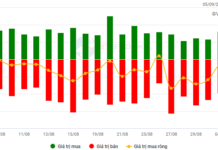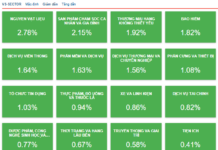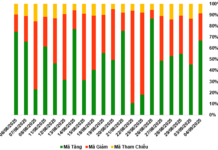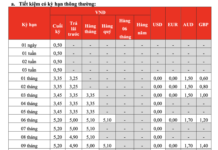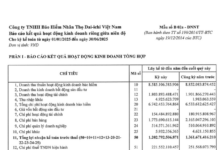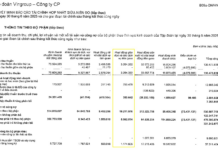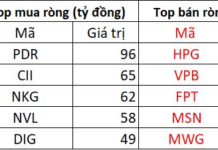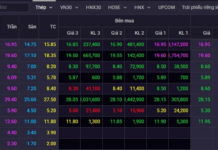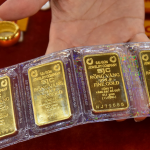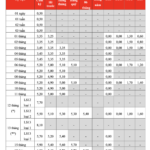Global gold prices continued to decline last night and this morning (August 7) due to the strengthening US dollar and rising US Treasury bond yields. However, the precious metal’s price remains supported by expectations of a Federal Reserve rate cut in September and escalating geopolitical tensions in the Middle East.
As of 8 a.m. Vietnamese time, the spot gold price in the Asian market stood at $2,386.10 per ounce, down $5.60 per ounce compared to the close in the US market, equivalent to a 0.23% decrease. Converted at Vietcombank’s selling exchange rate, this price is equivalent to about VND 72.8 million per tael, a decrease of VND 700,000 per tael from yesterday. In the past two days, the world gold price has decreased by VND 1.6 million per tael.
In the New York session last night, spot gold closed at $2,391.70 per ounce, a decline of $19.70 per ounce or 0.82%.
The Dollar Index, which measures the strength of the US dollar against a basket of six major currencies, closed at 102.97 points, up 0.27% from the previous session.
The Japanese yen weakened against the US dollar during Tuesday’s trading session after a sharp rally. The dollar gained 0.4% against the yen, reaching ¥144.74 to $1. This was the first decline for the yen against the greenback since the beginning of this month.
“Gold prices are weakening due to the stronger dollar. However, the macro environment for gold is relatively positive. Therefore, gold prices may fluctuate in the short term,” said Amelia Xiao Fu, head of commodity markets strategy at BOCI.
Additionally, the rise in US Treasury bond yields has put downward pressure on the precious metal market. The yield on the 10-year note rose as much as 11 basis points to 3.908%. Earlier, during Monday’s session, the yield on this maturity fell to the 3.8% region, the lowest since June 2023.
Nevertheless, the prospects of interest rate cuts in the US and geopolitical risks in the volatile Middle East continue to buoy gold prices.
In recent statements, Fed officials dismissed suggestions that the weaker-than-expected July jobs report indicated the economy was slipping into a recession. However, they warned that rate cuts were necessary to avoid such an outcome.
Iran’s vow to retaliate against Israel and the US for the deaths of two militia leaders has heightened concerns about a widening war in the Middle East. Meanwhile, Hezbollah militants in Lebanon have launched a series of attacks using drones and rockets targeting northern Israel.
Gold is a non-interest-bearing asset and is considered a safe haven, so a low-interest-rate environment with economic and political instability tends to benefit gold prices.

According to Fawad Razaqzada, an analyst at Forex.com, investor expectations of an imminent Fed rate cut will limit gold’s downside potential, even if this expectation fails to push gold prices to new record highs. However, he still expects gold prices to reach $2,500 per ounce in the short term.
According to data from the FedWatch Tool on the CME trading floor, there is a 100% probability of a Fed rate cut at the September meeting, with a 69.5% chance of a 0.5 percentage point reduction. Additionally, the market is betting on a 100% likelihood of further rate cuts in November and December.
By this session, the spot gold price has declined for four consecutive sessions, partly due to profit-taking and partly due to gold sales to offset losses in stock portfolios and carry-trade yen positions.
Gold prices: SJC gold and plain gold rings surge simultaneously
On the morning of January 31st, the prices of SJC gold and 24k smooth gold rings in Vietnam saw a simultaneous increase compared to the previous day.

